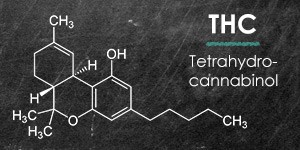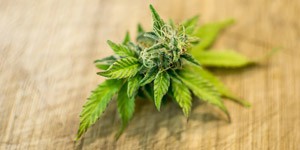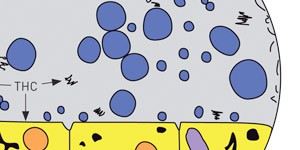By Robert Thomas

Robert Thomas (Rob), is the principal of Scientific Solutions, a consulting company that serves the educational and writing needs of the trace element analysis user community. Rob has worked in the field of atomic spectroscopy and inorganic mass spectrometry for over 40 years, including 25 years for a manufacturer of atomic spectroscopic instrumentation. He has authored more than 100 scientific publications, including a 15-part tutorial series, "A Beginner's Guide to ICP-MS." In addition, he has authored five textbooks on the fundamentals and applications of ICP-MS. His most recent book, a paperback edition of Measuring Heavy Metal Contaminants in Cannabis and Hemp, was published in December 2021. He is currently working on the 4th edition of his Practical Guide to ICP-MS: A Tutorial for Beginners textbook. He is the editor and regular contributor to the "Atomic Perspectives" column in Spectroscopy magazine as well serving on the editorial advisory board of Analytical Cannabis. Rob has an advanced degree in analytical chemistry from the University of Wales, UK, and is a Fellow of the Royal Society of Chemistry (FRSC) and a Chartered Chemist (CChem).
Cannabis and hemp are known to be avid hyper-accumulators of contaminants in the soil. That is why they have been used to clean up toxic waste sites where other kinds of remediation attempts have failed. In the aftermath of the Chernobyl nuclear melt down in the Ukraine in 1986, industrial hemp was planted to clean up the radioactive isotopes that had leaked into the soil and ground waters (1). The phytoremediation properties of botanical species are well-recognized. It has been reported that close to 400 plants, shrubs, flowers and trees have the ability to absorb extremely high levels of metal contaminants in the soil (2) including metallophytes, which can only survive in metal-rich growing environments (3).
Chernobyl Nuclear Disaster
On April 26, 1986, a sudden surge of power during a reactor systems test destroyed Unit 4 of the Chernobyl nuclear power plant in Pripyat, Ukraine, part of the former Soviet Union. The accident and the fire that followed released massive amounts of radioactive material into the environment and caused the worst nuclear disaster the world had ever seen. The fallout from the radiation poisoning was so horrific that farmers were deeply concerned that the soil would be irrevocably harmed by the toxic metals leaching into the soil. The site was left for a number of years to allow the radioactivity to subside. Then in the early 1990s scientists began to grow industrial cannabis and hemp around the abandoned Chernobyl nuclear power plant, and found it significantly reduced radionuclide soil toxicity (4). Fast forward 10 years to 2001 and a team of researchers in Germany confirmed the Chernobyl results by showing that the plant was able to extract lead, cadmium and nickel and other heavy metals from a plot of land contaminated with sewage sludge (5). All of a sudden industrial cannabis and hemp became a viable option for cleaning up many industrial contaminated sites around the world as it offered many benefits over traditional remediation approaches.
Traditional Soil Remediation
Heavy metal accumulation in soil has been rapidly increasing due to various industrial and other anthropogenic activities. As heavy metals are toxic and non-biodegradable, they persist in the environment, and have potential to enter the food chain through crop plants, and eventually may accumulate in the human body through long term exposure. As a result, heavy metal contamination has posed a serious threat to human health and the ecosystem. It is therefore necessary to take remediation measures to prevent heavy metals from entering into terrestrial, atmospheric, and aquatic environments.
There are a variety of remediation approaches that have been developed to reclaim heavy metal-contaminated soil, which are mainly based on mechanical or physio-chemical techniques, such as soil incineration, excavation and landfill, soil washing, solidification, and electric field application. However, there are limitations reported on these approaches such as high cost, inefficient when contaminants are present at low concentrations, irreversible changes to the physicochemical and biological properties of soils, which lead to the deterioration of the soil ecosystem, and the introduction of secondary pollutants. Therefore, there is clearly a need to develop cost-effective, efficient, and environmentally friendly remediation technologies to reclaim heavy metal-contaminated soil.
Principles of Phytoremediation
Phytoremediation is a plant-based clean-up approach, which involves the use of plants to extract and remove elemental pollutants or lower their bioavailability in soil (6). Plants have the ability to absorb ionic compounds in the soil even at low concentrations by extending their root system into the soil matrix and establishing rhizosphere ecosystem to accumulate heavy metals and modulate their bioavailability, thereby reclaiming the polluted soil and stabilizing soil fertility. There are many advantages of using phytoremediation, which include:
- Economically feasible, requiring only a source of carbon, nitrogen and solar energy for metabolic synthesis, therefore is simple to manage, with low cost of installation and maintenance.
- Environmentally-friendly—it can reduce exposure of pollutants to the environment and ecosystem.
- Prevents erosion and metal leaching through stabilizing heavy metals, reducing the risk of spreading of contaminants.
- Improves soil fertility by releasing various organic matter into the soil.
- Extremely efficient for many contaminants.
- Applicability over large areas with easy disposal of plants.
Phytoremediation Efficiency
A great deal of research has gone into molecular mechanisms to understand heavy metal tolerance and uptake by plants. It has been well-studied and as result the process of phytoremediation has been optimized and is extremely efficient. There are over 400 plants that can be called hyperaccumulators, many with properties that are metal specific. For example, alfalfa is a good remediator for classic heavy metals and studies have shown it can extract up to 43,000 mg of Pb per kg of the plant and still remain healthy. While other plants such as alpine pennygrass will work better for transition metals and studies have reported it can remove up to 51,000 mg/kg Zn from the soil (2). Cannabis and hemp are not as efficient as other metal-specific phytoremediators and metallophytes (3) but appear to be plants that have good accumulation properties for a broad range of contaminants including heavy metals, transition metals and radionuclides. A recent study showed that industrial cannabis and hemp could absorb up to 1000 mg/kg of cadmium without affecting the strength of its fibers (7). Its very long root system and high biomass means the metals are absorbed quickly and reside in many different parts of the plant, including roots, shoots, stems, leaves, flowers etc. As a result, it is widely used to clean up contamination from areas such as coal mining waste, metal refining, power plants, sewage sludges, and polluted nuclear reactor sites such as Chernobyl. It's also interesting to note that after the Fukushima nuclear meltdown in Japan in 2011, hemp together with sunflowers were used to clean up cesium-137 and Strontium-90 from the soil. Sunflowers are another hyperaccumulator plant with the added benefit of growing very tall for maximum absorption of the contaminant. In addition, they are inexpensive, plentiful in Japan, and well-suited for the local climate (8).
Many Uses of Cannabis and Hemp
In conventional phytoremediation, once the plants have absorbed the maximum level of contaminants, they are usually destroyed (typically incinerated) because they cannot be used for anything else. This is a very important point to emphasize, because cannabis and hemp have found a commercial use as a source of cannabinoids for medicinal and recreational purposes. When used for this purpose, they are strictly regulated by individual states in the US, so there is a robust regulatory process with maximum allowable limits for the most toxic heavy metals (Pb, Cd, As, Hg), which is supported by third party testing procedures to ensure the safety of consumers (9). In addition, hemp is also grown as a nutritional source of seeds as well as for industrial purposes including biofuels, building materials and fabrics to make clothes. Currently there are very few regulations for heavy metals in these products, which means they could potentially contain extremely high levels of heavy metals, depending on the source and where it's grown.
So, because of the lack of regulated protocols for cannabis and hemp used in remediation it cannot be utilized in the production of cannabinoids or for growing seeds. However, it has been proposed that it could also be used to make other products including biofuels, textiles, plastics or hempcrete (a building material made from hemp). Although this could be a very attractive option, the industry should proceed with caution. Depending on the element, it has been shown that hemp and other hyperaccumulator plants can extract up to 50,000 mg/kg (ppm) of metallic contaminant out of the soil and still remain healthy. If the contaminant levels are at the low end of this range, the risks are relatively low, but if they are at the high end, it could be completely different. One could argue that if it is used in the production of hempcrete it might not be such a serious problem, particularly if it's used for outdoor building construction purposes. However, wearing clothes that contain hemp-based textiles would not be such a good idea. Furthermore, if lead-contaminated hemp was used in the production of biofuels significant amounts are likely to be extracted into the biofuel. When the fuel goes through engine combustion, the vaporized Pb particles will eventually be emitted out of the vehicle's tail pipe, as it's well-accepted that the catalytic converter does not remove lead compounds. All of a sudden this environmentally friendly biofuel becomes a toxic polluter of lead. The US banned the use of tetra ethyl lead as a gasoline additive in the mid-1990s... Surely, we learned our lesson then!
Multi-faceted Plant
The passing of the Agricultural Act of 2014 (10) and the revamped Hemp Farming Act of 2018 (also known as the 2018 Farm Bill), (11) the federal government has made it legal to grow hemp (defined as cannabis containing less than 0.3 % THC) by removing it from the controlled substance list. As a result, because growers do not need a permit from the Drug Enforcement Administration (DEA) to plant hemp, it is being used for many varied and diverse applications. It has found use as a prolific phytoremediator which can thrive anywhere, including in contaminated soil. In this role it clearly has unique capabilities to clean up toxic pollutants where other approaches have failed. In addition, it is a wonderful source of fiber for novel fabrics to manufacture clothes as well as producing plastic components and hempcrete for building purposes (12). However, its role in the manufacture of cannabis consumer products is creating the most excitement because there appears to be an insatiable demand for cannabinoids to relieve a multitude of ailments including pain management, stress, anxiety, depression, seizures, epilepsy and much more (13). However, it should be strongly emphasized that because cannabis and hemp can be used for such a wide range of applications it is critically important that the growing conditions are carefully monitored. When planted outdoors, it will likely accumulate contaminants if the soil chemistry is right. So, if it is going to be used for phytoremediation purposes, its final end use should be carefully considered. And if the end products are cannabinoid consumer or medicinal products, it's imperative to make sure the growing environment is well-characterized before planting.
Global Perspective
It's worth pointing out that outside the US, cultivation, supply and possession of cannabis is typically only allowed for medical and scientific purposes. As a result, in most countries in Europe and South America, possession of the drug for personal use is a crime, which is punishable by imprisonment. In recent years, however, several countries have reduced their penalties for cannabis users, and some jurisdictions have even permitted supply of the drug for non-medical use. For example, in the Netherlands, the use of cannabis for recreational purposes is illegal, but since the early 1970s it has tolerated a system of cannabis supply (14). Furthermore, other countries have relaxed their cannabis laws, but very few have made it fully legal. At the time of writing only a handful of nations, like Malta, Germany and Luxembourg have made moves to actually legalize its use for recreational purposes. Most places in Europe just opt to largely decriminalize cannabis, which effectively makes its use in the home commonplace and legal. That means that even if someone is technically breaking the law by using cannabis, local law enforcement agencies are unlikely to take any action, unless the infraction is being carried out in public which may lead to a fine (15).
The situation in South America is very similar. In 2013, Uruguay made international news when it became the first country in the world to fully legalize recreational cannabis, and in the years since, the majority of other countries on the continent have passed legislation or lessened the legal penalties for cannabis possession, use, and cultivation. For example, Mexico only allowed the use of cannabis for medical and scientific research. However, in 2018, Mexico's Supreme Court declared that current prohibitions on the planting, cultivation, and harvesting of hemp were unconstitutional and ordered lawmakers to develop a legal framework for the distribution, sale, and regulation of cannabis and. Moreover, Brazil, Chile and Argentina have taken similar measures to set up legal, regulated medical cannabis programs, but even though recreational consumption was technically illegal, they have decriminalized its use, effectively allowing the market to develop (16).
Hemp Production
On the other hand, hemp is a crop grown across Europe and South America for a multitude of products including hemp seed, textiles, plastics, building materials and much more. In particular, in recent years the area dedicated to hemp cultivation has increased significantly in the EU as it contributes to the European Green Deal objectives by offering a number of environmental benefits, including carbon storage, breaking the cycle of disease, soil erosion prevention, biodiversity and low use of pesticides. As a result, from 2015 to 2022, the production of hemp increased from 97, 000 to 179,000 tons, an increase of 84.3%. France is the largest producer, accounting for more than 60% of EU production, followed by Germany (17%) and The Netherlands (5%) (17).
In South America, the smaller countries like Columbia, Ecuador and Paraguay are taking the lead and actively developing their hemp industries for grain and industrial applications. With established agricultural sectors and favorable climates, many other South American countries appear well-positioned for hemp cultivation and are expected to become major players in the global hemp market over the next several years (18).
Further Reading
1. Back to Chernobyl, Lila Guteman, New Scientist, April 10, 1999, https://www.newscientist.com/article/mg16221810-900-back-to-chernobyl/
2. Phytoremediation of radiocesium-contaminated soil in the vicinity of Chernobyl, Ukraine, Slavik Dushenkov et.al., Environmental Science & Technology, 33, 3, 469-475, (1999)
3. Metallophytes: the unique biological resource, its ecology and conservational status in Europe, central Africa and Latin America, A.J.M. Baker, et .al., Chapter in Ecology of Industrial Pollution, Cambridge University Press, June 5, 2012, https://www.cambridge.org/core/books/abs/ecology-of-industrial-pollution/metallophytes-the-unique-biological-resource-its-ecology-and-conservational-status-in-europe-central-africa-and-latin-america/D1AD982F5B31BD21FFDCF0A45F6386E0
4. Phytoremediation: A Promising Approach for Revegetation of Heavy Metal-Polluted Land, A. Yang et al., Front. Plant Sci., 30 April 2020, https://www.frontiersin.org/articles/10.3389/fpls.2020.00359/full
5. Health Effects of Chernobyl, German Affiliate of International Physicians for the Prevention of Nuclear War (IPPNW), Sebastian Pflugbeil et. al., April 2011, https://www.ippnw.org/pdf/chernobyl-health-effects-2011-english.pdf
6. Phytoremediation: Principles and Perspectives, Joan Barceló and Charlotte Poschenriede, CONTRIBUTIONS to SCIENCE, 2 (3): 333-344 (2003), https://www.researchgate.net/publication/28076724_Phytoremediation_Principles_and_perspectives
7. Cannabis sativa L. growing on heavy metal contaminated soil: growth, cadmium uptake and photosynthesis. P. Linger et. al., BIOLOGIA PLANTARUM 49 (4): 567-576, 2005,
8. Scientists Are Using Sunflowers To Clean Up Nuclear Radiation, Molly Beauchemin, Garden Collage magazine, May, 12, 2016, https://gardencollage.com/change/sustainability/scientists-using-sunflowers-clean-nuclear-radiation/
9. Cannabis testing regulations: A state-by-state guide, Leafly Magazine, July 28, 2020, https://www.leafly.com/news/health/leaflys-state-by-state-guide-to-cannabis-testing-regulations
10. 2014 Farm Act, US Department of Agriculture, https://www.ers.usda.gov/agricultural-act-of-2014-highlights-and-implications/
11. 2018 Farm Bill, US Department of Agriculture, https://www.usda.gov/farmbil
12. Seven surprising uses for industrial hemp, Cemile Kavountzis, USA Today, January7, 2022, https://www.usatoday.com/story/sponsor-story/generation-hemp/2022/01/07/7-surprising-uses-industrial-hemp/9104429002/
13. What are the forms of hemp and what are their health benefits? Megan Ware, Medical News Today, April 26, 2023, https://www.medicalnewstoday.com/articles/308044
14. Cannabis policy in Europe: status and recent developments, European Center for Drugs and Addiction, https://www.emcdda.europa.eu/publications/topic-overviews/cannabis-policy/html_en
15. Is Marijuana Legal in Europe? Breakdown By Country, Where's the Weed, February 17, 2022, https://wheresweed.com/blog/legalization/2020/jul/is-marijuana-legal-in-europe-breakdown-by-country
16. Where cannabis is legal in South America in 2023, The Cannigma, https://cannigma.com/cannabis-in-south-america/
17. Hemp production in the EU, European Commission, Agriculture and Rural Development, https://agriculture.ec.europa.eu/farming/crop-productions-and-plant-based-products/hemp_en
18. The Latin American Hemp Market: A Work in Progress with Great Potential, Hemp Benchmarks, Feb 7, 2022, https://www.hempbenchmarks.com/hemp-market-insider/the-latin-american-hemp-market/


